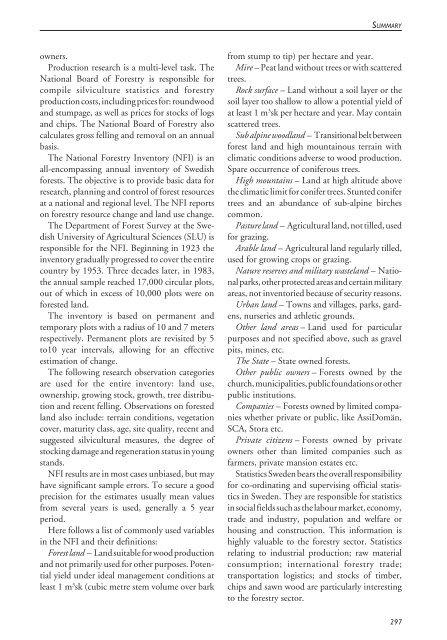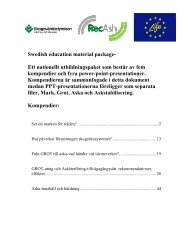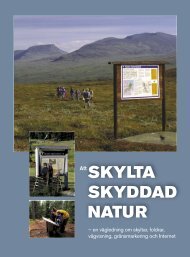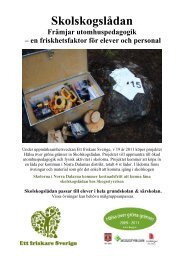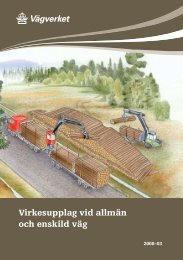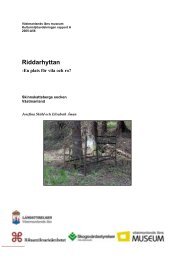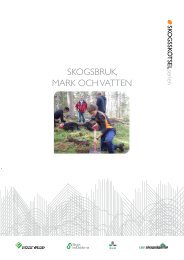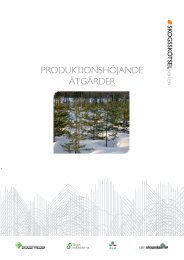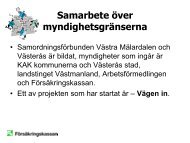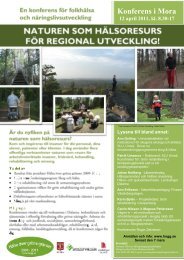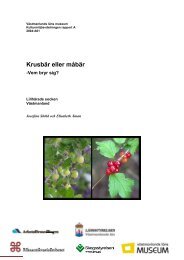Skogsstatistisk årsbok 2003.pdf - Skogsstyrelsen
Skogsstatistisk årsbok 2003.pdf - Skogsstyrelsen
Skogsstatistisk årsbok 2003.pdf - Skogsstyrelsen
- No tags were found...
Create successful ePaper yourself
Turn your PDF publications into a flip-book with our unique Google optimized e-Paper software.
SUMMARYowners.Production research is a multi-level task. TheNational Board of Forestry is responsible forcompile silviculture statistics and forestryproduction costs, including prices for: roundwoodand stumpage, as well as prices for stocks of logsand chips. The National Board of Forestry alsocalculates gross felling and removal on an annualbasis.The National Forestry Inventory (NFI) is anall-encompassing annual inventory of Swedishforests. The objective is to provide basic data forresearch, planning and control of forest resourcesat a national and regional level. The NFI reportson forestry resource change and land use change.The Department of Forest Survey at the SwedishUniversity of Agricultural Sciences (SLU) isresponsible for the NFI. Beginning in 1923 theinventory gradually progressed to cover the entirecountry by 1953. Three decades later, in 1983,the annual sample reached 17,000 circular plots,out of which in excess of 10,000 plots were onforested land.The inventory is based on permanent andtemporary plots with a radius of 10 and 7 metersrespectively. Permanent plots are revisited by 5to10 year intervals, allowing for an effectiveestimation of change.The following research observation categoriesare used for the entire inventory: land use,ownership, growing stock, growth, tree distributionand recent felling. Observations on forestedland also include: terrain conditions, vegetationcover, maturity class, age, site quality, recent andsuggested silvicultural measures, the degree ofstocking damage and regeneration status in youngstands.NFI results are in most cases unbiased, but mayhave significant sample errors. To secure a goodprecision for the estimates usually mean valuesfrom several years is used, generally a 5 yearperiod.Here follows a list of commonly used variablesin the NFI and their definitions:Forest land – Land suitable for wood productionand not primarily used for other purposes. Potentialyield under ideal management conditions atleast 1 m 3 sk (cubic metre stem volume over barkfrom stump to tip) per hectare and year.Mire – Peat land without trees or with scatteredtrees.Rock surface – Land without a soil layer or thesoil layer too shallow to allow a potential yield ofat least 1 m 3 sk per hectare and year. May containscattered trees.Sub alpine woodland – Transitional belt betweenforest land and high mountainous terrain withclimatic conditions adverse to wood production.Spare occurrence of coniferous trees.High mountains – Land at high altitude abovethe climatic limit for conifer trees. Stunted conifertrees and an abundance of sub-alpine birchescommon.Pasture land – Agricultural land, not tilled, usedfor grazing.Arable land – Agricultural land regularly tilled,used for growing crops or grazing.Nature reserves and military wasteland – Nationalparks, other protected areas and certain militaryareas, not inventoried because of security reasons.Urban land – Towns and villages, parks, gardens,nurseries and athletic grounds.Other land areas – Land used for particularpurposes and not specified above, such as gravelpits, mines, etc.The State – State owned forests.Other public owners – Forests owned by thechurch, municipalities, public foundations or otherpublic institutions.Companies – Forests owned by limited companieswhether private or public, like AssiDomän,SCA, Stora etc.Private citizens – Forests owned by privateowners other than limited companies such asfarmers, private mansion estates etc.Statistics Sweden bears the overall responsibilityfor co-ordinating and supervising official statisticsin Sweden. They are responsible for statisticsin social fields such as the labour market, economy,trade and industry, population and welfare orhousing and construction. This information ishighly valuable to the forestry sector. Statisticsrelating to industrial production; raw materialconsumption; international forestry trade;transportation logistics; and stocks of timber,chips and sawn wood are particularly interestingto the forestry sector.297


